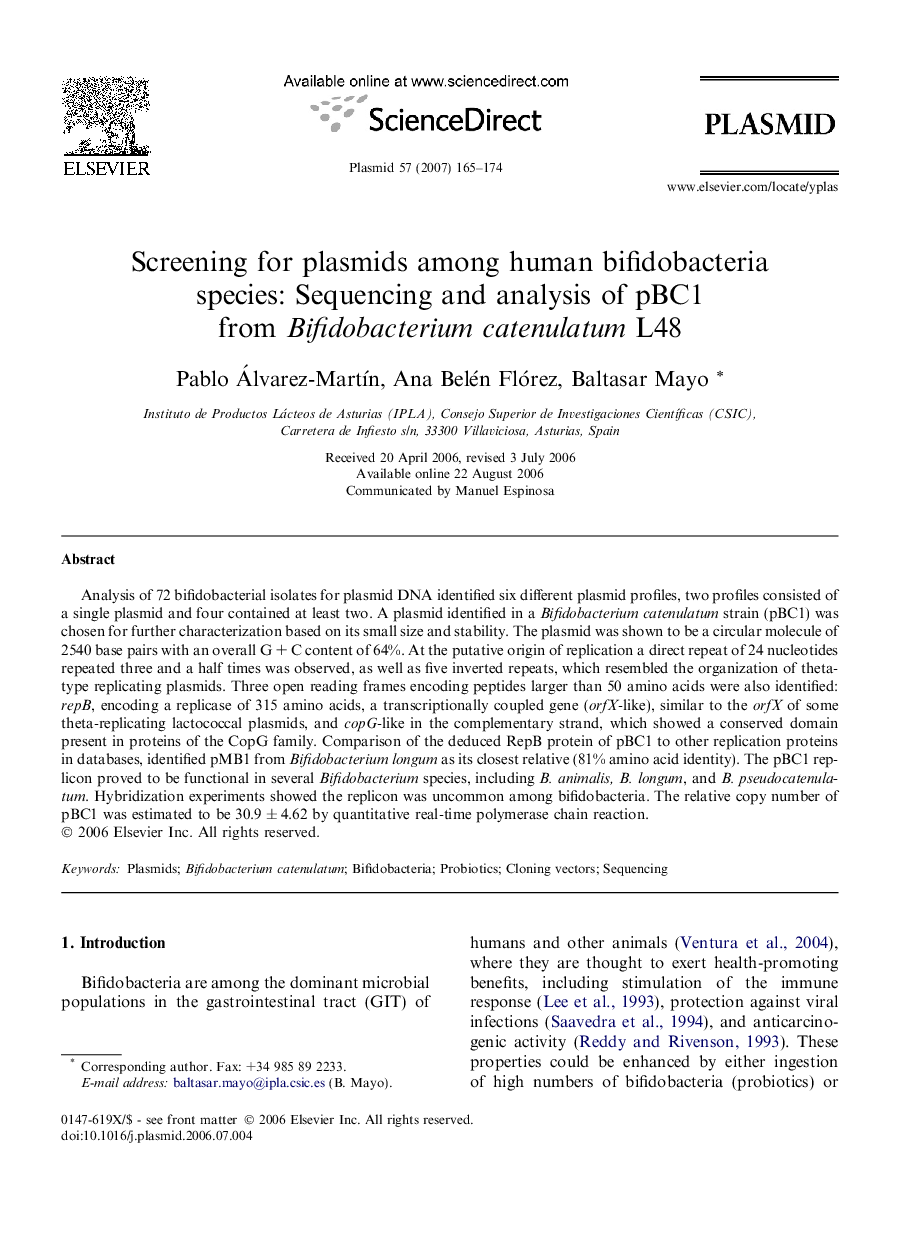| Article ID | Journal | Published Year | Pages | File Type |
|---|---|---|---|---|
| 2824472 | Plasmid | 2007 | 10 Pages |
Analysis of 72 bifidobacterial isolates for plasmid DNA identified six different plasmid profiles, two profiles consisted of a single plasmid and four contained at least two. A plasmid identified in a Bifidobacterium catenulatum strain (pBC1) was chosen for further characterization based on its small size and stability. The plasmid was shown to be a circular molecule of 2540 base pairs with an overall G + C content of 64%. At the putative origin of replication a direct repeat of 24 nucleotides repeated three and a half times was observed, as well as five inverted repeats, which resembled the organization of theta-type replicating plasmids. Three open reading frames encoding peptides larger than 50 amino acids were also identified: repB, encoding a replicase of 315 amino acids, a transcriptionally coupled gene (orfX-like), similar to the orfX of some theta-replicating lactococcal plasmids, and copG-like in the complementary strand, which showed a conserved domain present in proteins of the CopG family. Comparison of the deduced RepB protein of pBC1 to other replication proteins in databases, identified pMB1 from Bifidobacterium longum as its closest relative (81% amino acid identity). The pBC1 replicon proved to be functional in several Bifidobacterium species, including B. animalis, B. longum, and B. pseudocatenulatum. Hybridization experiments showed the replicon was uncommon among bifidobacteria. The relative copy number of pBC1 was estimated to be 30.9 ± 4.62 by quantitative real-time polymerase chain reaction.
